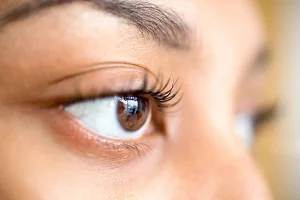
Fungal infection is not a new disease. We often heard about this infection affecting the body such as feet, body and nails. Do you know that this infection can also affect the scalp? We may often associate scalp problems with dandruff and lice but we are pretty sure we are not familiar with fungus infecting the scalp or in medical terms called tinea capitis. In this article, we will be focusing on tinea capitis and its treatment. You can always ask a doctor if you find yourself or anyone you know associated with this infection.
Tinea capitis is also known as ringworm or herpes tonsurans infection. Although it is called a ringworm, it has nothing to do with worms. In fact, it is commonly caused by fungal species of Microsporum, Epidermophyton and Trichophyton. The fungi are able to penetrate the hair follicle and grow downwards toward the scalp skin. It invades the keratin which in return makes the hair brittle and easily break. Tinea capitis cases can be seen almost everywhere in the world and most common in hot and humid climates which includes Southeast Asia.
Tinea capitis affects the children more than adults but that does not mean the severity of the infection is much more prominent in children. People with immunosuppression such as diabetes, cancer and usage of immunosuppressant or long-term steroid use, have a higher chance to acquire tinea capitis due to the impairment of the hair growth and strength. The infection can be easily transmitted by human skin contacts and sharing objects such as towels, hair brushes or bedding. It is also possible to catch this infection when a person pets an animal or touches the dirty ground.
How do you know if a person acquires tinea capitis? The infection usually starts as a red bump on the scalp and gradually affects the whole scalp. Symptoms involve redness, itching scalp, formation of scale as if like a severe dandruff and can be associated with patches of hair loss (alopecia). Aside from the scalp, it may also cause symptoms to the eyelashes or eyebrows. In some cases, cervical lymphadenopathy (swelling of the lymph node around the neck) may appear. Symptoms may actually vary according to the fungal species infecting.
Black dot tinea capitis is the classic presentation with infection causing appearance of black dots. The black dots are actually caused by fracture or breakage of the hair. Kerion and favus are another presentation for tinea capitis. Kerion is presented with a severe inflammatory reaction and is often painful. It is usually accompanied with spreading of multiple small inflamed pus-filled pustules. Favus on the other hand is a rare case which is characterised by yellow crusted lesion known as scutula.
Since tinea capitis can cause great discomfort and possible hair loss that is permanent, it is important to get the right treatment. Antifungal medications are the best drug to help treat this condition. This can be in forms of griseofulvin, itraconazole and fluconazole. These antifungal medications are usually in tablet form and often combined with antifungal shampoo. Treatment not only helps to eliminate the infection from causing further damage to the scalp, but also helps to curb the infection from spreading. Since treatment can take more than 4 weeks and up to months, it is necessary for patients to adhere to their medication because only long-term and continuous medication can be effective against the fungal infection. Hair equipment needs to be cleaned or disinfected, better to be replaced to avoid re-infection. All household contacts should be screened for tinea capitis when a person is known to suffer this disease. Avoid sharing individual objects such as caps, hairbrushes, comb and pillows alongside bed linens.







